© Copyright Middlewich Heritage Trust 2025. Registered Charity No 1161871. Company Limited by Guarantee No 9441581
Made with 🤍 by Bloom Digital Marketing Ltd.
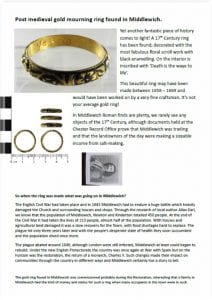
This beautiful ring may have been made between 1658 – 1669 and would have been worked on by a very fine craftsman. It’s not your average gold ring!
Further research will be done to try and find out as much as possible about the ring and circumstances surrounding it. In the meantime, the ring has been classed as Treasure and therefore comes under the Treasure Act 1996. It has been valued at £1,900 and is currently in the care of the British Museum. Middlewich Town Council has been given a chance to secure the ring for display in our community if we can raise the money by the end of April 2013.
The Heritage Development Officer is urgently looking to raise funds but seeks the public’s help in raising donation money. It’s a fantastic opportunity to have this item to show to the community, it represents a difficult period in the lives of Middlewich people but also the status of the landowners.
If Middlewich Town Council cannot raise £1,900 then the ring will go on general sale and we will lose it. To pledge money simply email heritage@middlewich.org.uk , stating your full name, address and contact phone number with how much you want to pledge. We will not take any payment until the pledges reach the target, if we are successful we will contact you and organise payment, if we do not reach the target then no monies will be taken.
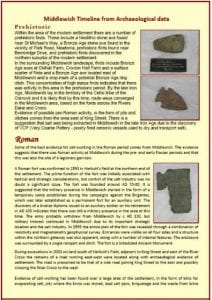
To read this document click on the link:
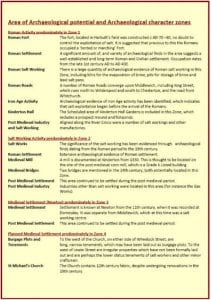
research and briefly looks at some of the work already done.
To read this document click on the link below
Roman Archaeology Dig Sites – latest finds from Jersey Way, Middlewich by Oxford Archaeology North
Information snippet on the Archaeological Dig
Paragraph by Ian Miller of Oxford Archaeology North. Photos from OAN and Kerry Fletcher. The full report may take up to a year but will be posted on this website.
We spent nearly three months excavating the site on Jersey Way. The fieldwork is very much a data-gathering exercise, generating the information that we will interrogate as part of the post-excavation process to come up with a detailed account of what was happening on the site and exactly when. However, we have got a pretty good idea of what’s going on at this stage, although the precise dating is somewhat provisional.
Our current thoughts are that the site was first occupied during the middle of the first century – we don’t have any firm evidence for any Iron Age activity on the site, although this could come to light during the post-excavation process when we’ve had a proper look at all the pottery and have carried out some radio-carbon dating. It seems that the earliest Roman features on the site are a series of shallow ditches. We often find similar features on Roman sites, and generally consider them to be boundary ditches, rather than purely for drainage. There is certainly good evidence elsewhere for the Roman military laying out ‘development plots’ when they first arrive at a site that they intend to settle, and mark these plots by digging shallow ditches.
The main thrust of Roman activity on the site is salt-working, and the excavation has allowed several timber-lined wells (or probably brine springs, shown above left), a brine storage tank (above right) and a boiling hearth to be recorded. In addition, we have plenty of fragments of briquetage, which almost certainly represents the vessels in which the brine was stored after boiling. A large sheet of folded lead that had been put into the brine well before it was backfilled could be part of a Roman salt pan.
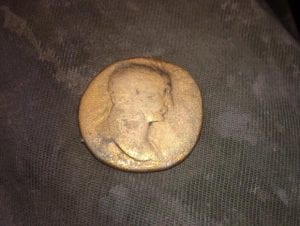
At the southern end of the site were the shallow foundations for a timber building. The purpose of this building is open to interpretation, although it could perhaps have served as a warehouse for the salt, and also as a home for the salt workers. A lot of pottery was found in this part of the site, suggesting that it had been a focus for domestic activity. The remains of metalling was exposed by the timber building, representing a road surface that would have connected to the main Roman road.
No firm evidence for burials on the site, although we did find several fragments of burnt bone. These could be cremated human bone, which would suggest a cemetery in the immediate vicinity, but firm evidence is lacking. This could be a result of later ploughing, which destroyed the upper surface of the Roman levels. This would also explain the lack of evidence for Roman activity on the site during the later second and third centuries. One indication of later Roman activity (although we don’t have a date for it just yet) is another series of boundary ditches, which are clearly later than the original ditches, and on a slightly different alignment. This may indicate that the focus of the settlement had been re-aligned for some reason.
The Virtual Dig is a project jointly produced by South Cheshire College and Middlewich Town Council. It gives you an aerial view of Middlewich from which you identify and zoom into potential locations for a dig. If the dig is succesful you are rewarded with some information about your ‘find’.
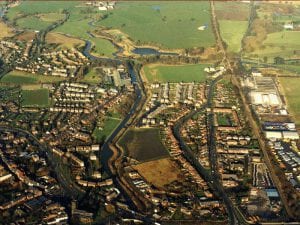
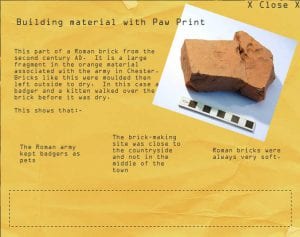 Click ‘X CLOSE X’ to exit the information panel and carry on digging.
Click ‘X CLOSE X’ to exit the information panel and carry on digging.To get started click: Start Virtual Dig
Between the months of July and October 2005 community volunteers in the town of Middlewich, Cheshire, were involved in a public archaeological excavation on land at Buckley’s Field adjacent to King Street, the Roman heart of the town. To find out more please click here.
The Trust is established for the preservation and promotion of the heritage of Middlewich (including buildings, artefacts and archives) as a resource for the benefit of the residents of Cheshire East, of Cheshire West and Chester, and of the wider public. Middlewich Heritage Trust is a not for profit organisation and welcomes volunteers from all walks of life in a number of different areas.
There are many ways to get involved with Middlewich Heritage and volunteers are a crucial part of what we do. For more information on how to become a volunteer please contact us.
Mike Walton
Chair, Middlewich Heritage Trust
| Cookie | Duration | Description |
|---|---|---|
| yt-player-headers-readable | never | The yt-player-headers-readable cookie is used by YouTube to store user preferences related to video playback and interface, enhancing the user's viewing experience. |
| yt-remote-cast-available | session | The yt-remote-cast-available cookie is used to store the user's preferences regarding whether casting is available on their YouTube video player. |
| yt-remote-cast-installed | session | The yt-remote-cast-installed cookie is used to store the user's video player preferences using embedded YouTube video. |
| yt-remote-connected-devices | never | YouTube sets this cookie to store the user's video preferences using embedded YouTube videos. |
| yt-remote-device-id | never | YouTube sets this cookie to store the user's video preferences using embedded YouTube videos. |
| yt-remote-fast-check-period | session | The yt-remote-fast-check-period cookie is used by YouTube to store the user's video player preferences for embedded YouTube videos. |
| yt-remote-session-app | session | The yt-remote-session-app cookie is used by YouTube to store user preferences and information about the interface of the embedded YouTube video player. |
| yt-remote-session-name | session | The yt-remote-session-name cookie is used by YouTube to store the user's video player preferences using embedded YouTube video. |
| ytidb::LAST_RESULT_ENTRY_KEY | never | The cookie ytidb::LAST_RESULT_ENTRY_KEY is used by YouTube to store the last search result entry that was clicked by the user. This information is used to improve the user experience by providing more relevant search results in the future. |
| Cookie | Duration | Description |
|---|---|---|
| _ga | 1 year 1 month 4 days | Google Analytics sets this cookie to calculate visitor, session and campaign data and track site usage for the site's analytics report. The cookie stores information anonymously and assigns a randomly generated number to recognise unique visitors. |
| _ga_* | 1 year 1 month 4 days | Google Analytics sets this cookie to store and count page views. |
| Cookie | Duration | Description |
|---|---|---|
| PREF | 8 months | PREF cookie is set by Youtube to store user preferences like language, format of search results and other customizations for YouTube Videos embedded in different sites. |
| VISITOR_INFO1_LIVE | 6 months | YouTube sets this cookie to measure bandwidth, determining whether the user gets the new or old player interface. |
| VISITOR_PRIVACY_METADATA | 6 months | YouTube sets this cookie to store the user's cookie consent state for the current domain. |
| YSC | session | Youtube sets this cookie to track the views of embedded videos on Youtube pages. |
| yt.innertube::nextId | never | YouTube sets this cookie to register a unique ID to store data on what videos from YouTube the user has seen. |
| yt.innertube::requests | never | YouTube sets this cookie to register a unique ID to store data on what videos from YouTube the user has seen. |
| Cookie | Duration | Description |
|---|---|---|
| _pk_id.43236.731c | 1 year 1 month | Description is currently not available. |
| _pk_ses.43236.731c | 1 hour | Description is currently not available. |